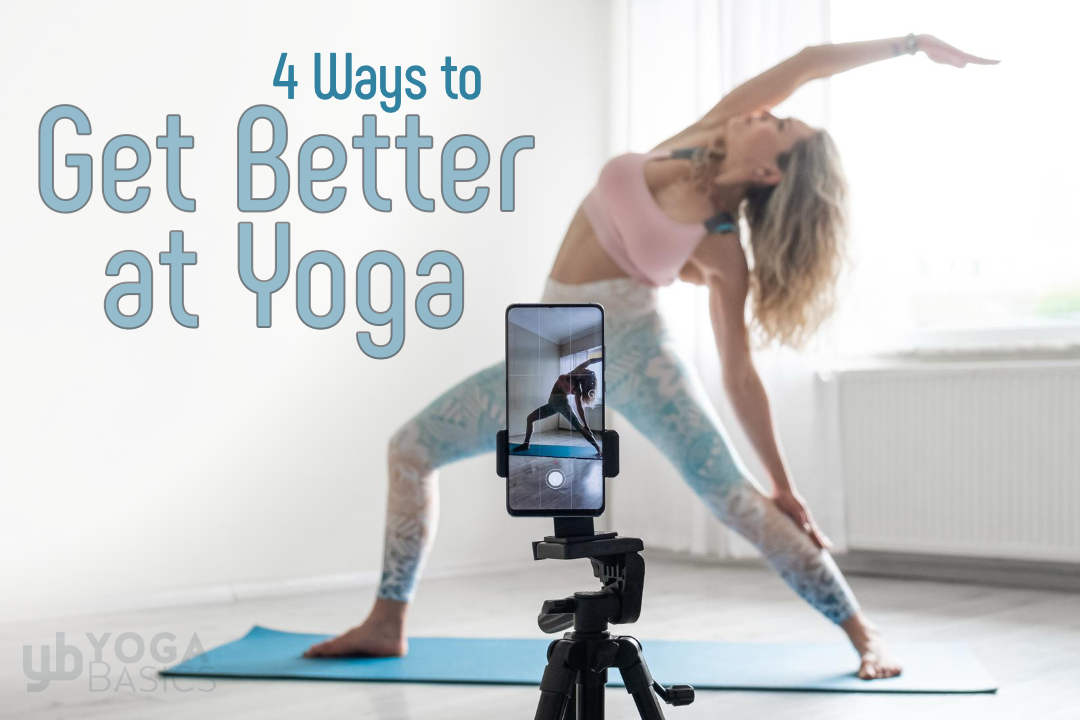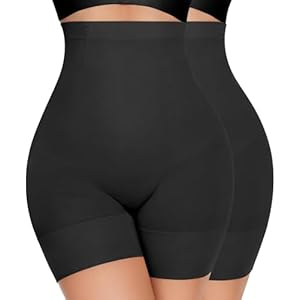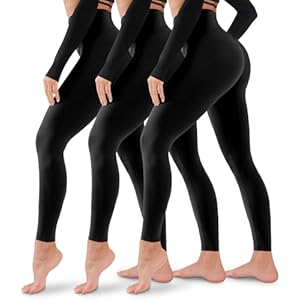
Have you ever ever felt caught in your follow? You present as much as your mat persistently, placing within the effort, however your alignment in sure yoga poses simply doesn’t appear to enhance. This can be a frequent expertise for a lot of yogis. The difficulty typically isn’t an absence of tapas or self-discipline, however somewhat a necessity for a extra organized method to your sadhana. Utilizing a four-step system—analyze, align, monitor, and refine—you possibly can create an clever, extra productive path to enhancing your asanas.
Disclosure: This submit might comprise affiliate hyperlinks. If a purchase order is made via these hyperlinks, we might earn a fee at no additional price to you. Your type assist helps us create extra conscious articles!
Step 1 — Analyze: Set up an Goal Baseline
Step one for enhancing your asanas is to create a transparent and sincere image of what’s occurring in your physique. You must see what you’re truly doing in a pose, not what you suppose or really feel you’re doing. Deal with 1-3 poses at a time. Taking up an excessive amount of directly is overwhelming and unproductive.
Key Issues to Observe in Asanas:
- Joint Angles and Alignment: What’s the connection between your hip, knee, and ankle? How are your shoulders positioned relative to your hips? Is your knee bending in the identical route as your toes? Are you locking out your elbows and knees?
- Engagement vs Leisure: Are there muscle groups which can be engaged that may be relaxed? Are you activating all of the muscle groups wanted to carry the form of the pose?
- Spinal Curves and Alignment: Is your backbone rounding in a ahead fold or over-arching in a backbend?
- Weight Distribution: The place is your weight in your toes or arms? Is it equally balanced?
- Breath High quality: Is your breath always gradual, deep, easy and regular, or strained?
- Stability & Stability: Are you wobbling or utilizing momentum to carry a pose?
- Recurring Sensations: Observe any areas of recurring pressure or discomfort.
Massive Image Observations
You too can monitor the bigger goal and subjective progress in your follow. You do not want to trace each one of many under recommended metrics, simply preserve notes on what’s most essential to you.
- Goal Metrics: Maintain instances, vary of movement/depth of stretch (use a visible marker like “fingertips to ground”), maintain period in seconds or breaths, or repetitions of a managed motion just like the Solar Salutations.
- Subjective Metrics: Perceived ease (1-10 scale), smoothness and high quality of breath, ache or discomfort scale (0-10), and your power degree after follow.
- Consistency: Observe your classes per week and the period of every.
Instruments & Strategies:
 Brief Video Clips: Use your smartphone, laptop computer webcam, or different system to file your self from a number of angles—facet, entrance, and three-quarter views. You possibly can prop a smartphone up on a yoga block in a pinch, have somebody video you, or use a tripod. You could possibly additionally take nonetheless images, however with video you possibly can hit file and stroll away with out fussing with particular person images.
Brief Video Clips: Use your smartphone, laptop computer webcam, or different system to file your self from a number of angles—facet, entrance, and three-quarter views. You possibly can prop a smartphone up on a yoga block in a pinch, have somebody video you, or use a tripod. You could possibly additionally take nonetheless images, however with video you possibly can hit file and stroll away with out fussing with particular person images.- Lighting: Make certain the room is vibrant sufficient so the images or video are clear sufficient to point out particulars. Don’t overdo it, as a really brightly lit room may be distracting.
- Mirror Checks: Practising close to a mirror gives instant visible suggestions, particularly for static poses. Use a big full-length mirror if doable. You too can use a cluster of smaller mirrors if wanted. Take a look at your self and modify based mostly on what you see within the mirror. Shift your route and angle and look once more.
- Trainer Suggestions: A talented instructor can provide insights inconceivable to see by yourself. They will additionally bodily modify you so you possibly can really feel the appropriate alignment in your physique.
- AI Yoga Apps: There are a number of new AI-powered apps that analyze your poses and provides real-time suggestions and steering. These digital instruments can determine and proper frequent errors whenever you follow at house with out a instructor. Functions like Yogi can analyze your posture via your telephone’s digital camera, giving real-time alignment cues particular to your physique.
Create an “Evaluation Snapshot” in a Journal, Pocket book, or Spreadsheet
Use a journal, spreadsheet, or yoga app to log your findings, making a baseline you possibly can return to later to trace your progress. Under is a pattern of what an entry might comprise.
- Date:
- Pose(s):
- Context: (e.g., Chilly, after a warm-up, finish of follow)
- Goal Observations: (e.g., “Entrance knee is collapsing inward,” “Rounding my low again”)
- Perceived Issue: (Scale of 1-10)
- Ache Flags: (e.g., “Sharp pinch in left shoulder”)
Step 2 — Align: Apply Corrections and Modifications
When you’ve analyzed your pose, the following step is making use of corrections. Confer with asana guides to be taught the proper alignment and examine it to what you might be seeing in your poses. Deal with the massive misalignments and poor mechanics first, then work your method to fixing extra delicate patterns.
Rules for Alignment Work:
- Begin with the Basis: Like a home, a pose is constructed from the bottom up. Right the largest, most evident points first, within the elements of the physique related to the ground. For instance, the place of the toes and knees in standing poses.
- Use progressive corrections: Begin with large world changes, then transfer your focus and consciousness to regional changes, and eventually small native changes.
World: modify stance, foot place, or general weight shift (e.g., “shift weight into the heels”).
Regional: modify a joint chain (e.g., “stack the knee over the ankle”).
Native: fine-tune smaller particulars (e.g., “exterior rotation of the femur by micro-turning the thigh”). - Hold it Easy: Use clear, simple alignment cues you possibly can keep in mind.
- Respect Your Limits: By no means power a place that causes ache. Making use of corrections based mostly on the precept of Ahimsa, or non-harming.
Pause, breathe, and really feel the change after a correction. Attempt to absorb the bodily and energetic feeling of the corrected asana, to create a reminiscence of what it seems like. In case you expertise persistent ache or uncertainty about alignment, cease and seek the advice of an skilled instructor.
For giant-picture goal and subjective observations, use this data to craft particular targets after which break these down into an in depth plan of motion. You could must seek the advice of with a extra skilled practitioner or a yoga instructor to fine-tune and refine your targets and provides insights on the way to obtain them.
Repeat steps one and two regularly for a number of weeks earlier than shifting to the following step.
Step 3 — Observe, Overview, Replicate
Overview your log each few weeks. Search for patterns, plateaus, regressions, or areas of progress. Have a good time all enhancements, irrespective of how small. Replicate on the place you haven’t seen any positive aspects, and resolve if extra persistence or effort is required to progress. Resolve whether or not you need to proceed your present plan, refine your targets, or transfer to the following stage to make refinements. Jot down these ideas in your journal or pocket book.
Step 4 — Refine, Deepen, and Progress
Refinement makes use of your tracked information and general expertise to make smaller, extra focused changes. This will shift from the bodily facets of your follow to extra inner work. You could need to dial in your respiration, or work with the energetics of the asanas. For instance, you possibly can discover utilizing totally different respiration ratios, interact a number of bandhas (energetic seals), use kumbhaka (breath retention), or strengthen your drishti (gaze point) in a number of asanas. Or you could need to make use of an skilled yoga instructor to work on nuanced changes {that a} digital camera can’t totally choose up.
You possibly can keep at this stage for some time, or you possibly can return to Step 1 for a brand new cycle of aware enchancment.
Widespread Pitfalls and Troubleshooting
Dashing Your Progress
It’s a standard tendency to need to power the physique into deeper or extra superior poses earlier than constructing a basis of mobility and energy. That is typically pushed by the ahamkara, the ego.
A Higher Manner: Break difficult poses into smaller, extra accessible elements to work on. Follow humility, and honor your physique’s limits.
Copying Cues Blindly
Following verbal cues from a instructor or mimicking pictures on social media with out contemplating your distinctive anatomy can lead you astray. An instruction is a information, not a gospel.
A Higher Manner: Study the underlying precept of a cue. Examine what that motion is supposed to attain within the pose in your physique after which adapt it.
Chasing Aesthetics
Caring extra in regards to the look of a pose than its practical stability and inner expertise is a surefire method to invite harm.
A Higher Manner: Discover a stability between the exterior look of an asana and the inner expertise of breath, focus, consciousness, and power. Reframe your targets with the follow of Ahimsa (non-harming) in thoughts.
Inconsistent Focus
Trying to enhance a dozen totally different poses directly with out a prioritized plan typically results in scattered outcomes and frustration.
A Higher Manner: Apply dharana (concentration) to your bodily follow. Choose only one to 3 poses to concentrate on for a interval of 6–8 weeks, then shift your consideration to different targets.
Poor Development Planning
Quickly growing the depth or period of your follow is a standard mistake that may sideline your follow.
A Higher Manner: Persistence is paramount. Apply the precept of gradual development. You may enhance your follow time or pose maintain time by simply 5–10% each few weeks or so.
Working Towards Your Nervous System
Making an attempt to be taught or do an excessive amount of when you find yourself overstressed, fatigued, or emotionally taxed is like swimming upstream.
A Higher Manner: Plan technical work in your asanas for whenever you really feel rested and calm. When confused, choose a soothing follow that deregulates the nervous system and revives your internal energy.
Over-activating Muscular tissues
Bracing or gripping muscle groups that needs to be relaxed in an asana creates extreme rigidity that blocks the flow of prana (life force energy).
A Higher Manner: Follow discerning between crucial engagement and pointless rigidity. Contract a muscle group for a second, then soften it consciously whereas sustaining the general form of the pose. This develops a extra refined bodily consciousness.
Last Ideas
Bettering your yoga follow isn’t about forcing your physique right into a form, or conforming to common misconceptions of yoga. Enchancment requires deep listening, reflection, clever motion, and persistence. This four-step system—analyze, align, monitor, refine—gives a sensible path to enchancment. Over time, these small changes enhance stability, respiration, motion, and make you are feeling extra current, conscious, and alive.
Trending Merchandise











